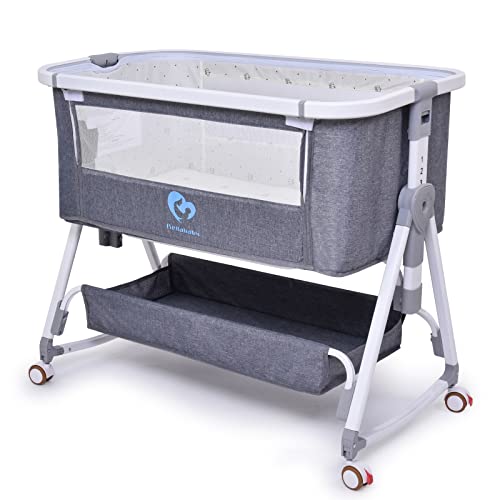10 Of The Top Mobile Apps To Baby Cots
The Essential Guide to Baby Cots in the UK
Selecting the ideal cot for a newborn can be a difficult task for new parents. With numerous choices available in the UK market, comprehending the functions, safety standards, and types of baby cots is crucial. This short article intends to provide a helpful summary of the various baby cots available, their benefits, and factors to consider for moms and dads in the UK.
Kinds Of Baby Cots
There are a number of kinds of baby cots available in the UK, each developed to fulfill various requirements and choices. The most common types include:
Standard Cots: These are standard baby cots that offer a safe sleeping environment for babies and babies. They normally feature adjustable bed mattress heights to match the baby's growth.
Convertible Cots: Also called 3-in-1 or 4-in-1 cots, these versatile choices can transform from a cot to a young child bed and even into a full-size bed. They are designed for prolonged use, making them a cost-efficient choice.
Moses Baskets: Ideal for the early months, Moses baskets are lightweight and portable, making them easy to move around the home. They normally include a detachable cover and a soft bed mattress.
Travel Cots: These cots are foldable and compact, particularly designed for moms and dads on the go. They include a travel bag for simple transportation and are ideal for slumber parties or holiday journeys.
Co-Sleepers: These cots are created to connect to the parent's bed, enabling easy access to the baby throughout the night while ensuring the child has their own safe sleeping space.
Table 1: Comparison of Baby Cot Types
Kind of Cot
Age Range
Portability
Longevity
Price Range
Standard Cot
Birth to 2 years
Low
Moderate
₤ 120 – ₤ 300
Convertible Cot
Birth to 5+ years
Moderate
High
₤ 150 – ₤ 500
Moses Basket
Birth to 6 months
High
Low
₤ 40 – ₤ 150
Travel Cot
Birth to 3 years
Very High
Low
₤ 50 – ₤ 200
Co-Sleeper
Birth to 6 months
Moderate
Low
₤ 100 – ₤ 300
Safety Standards for Baby Cots in the UK
Ensuring the security of a baby cot is paramount. In the UK, all cots must follow specific guidelines to guarantee they are safe for use. The following requirements must be met:
British Standard BS EN 716: This basic sets requirements for the security and performance of children's cots and folding cots.
Product Safety: The cot should be made from non-toxic products that are devoid of harmful chemicals.
No Sharp Edges: Ensure there are no sharp edges or protruding points that could hurt the baby.
Stable Structure: The cot needs to have a steady base to prevent tipping, and the slats need to be spaced correctly to prevent the baby's head from getting caught.
Mattress Fit: The mattress ought to fit snugly in the cot, without any spaces that might present a suffocation danger.
Features to Consider When Choosing a Baby Cot
When choosing a baby cot, parents ought to keep the following features in mind:
Adjustable Mattress Heights: Cots with adjustable heights make it easier to position and raise the baby as they grow.
Material Quality: Look for sustainably sourced wood or materials that are both durable and safe for children.
Relieve of Assembly: Cots that are simple to assemble and take apart can conserve moms and dads time and disappointment.
Storage Options: Some cots come with integrated storage drawers to keep baby fundamentals arranged.
Style and Aesthetic: Choose a cot style that fits well with the home design while guaranteeing it is practical and safe.
FAQs About Baby Cots in the UK
Q1: How much should I expect to spend on a baby cot?
A1: Prices for baby cots in the UK can vary extensively based upon type and brand, varying from ₤ 40 for a fundamental Moses basket to over ₤ 500 for high-end convertible cots.
Q2: When can my baby relocate to a cot from a crib?
A2: Most children shift to a cot in between 6 months and 2 years, depending upon their size and movement. It's crucial to monitor their developmental milestones.
Q3: Are pre-owned cots safe to use?
A3: While pre-owned cots can be safe, ensure they fulfill present safety standards and show no signs of wear, damage, or recalls. It's suggested to prevent older models that might not abide by present regulations.
Q4: Can I use a cot for a co-sleeping arrangement?
A4: Co-sleeper cots are designed particularly for this purpose, permitting you to keep your baby close while maintaining a safe sleeping environment. Constantly comply with Cots To Tots -sleeping security suggestions.
Q5: What is the best bed mattress type for a baby cot?
A5: A company and flat mattress is recommended for babies. Avoid Cots Sale , as they increase the risk of suffocation. Ensure it fits snugly in the cot without any gaps.
Choosing the ideal baby cot is an essential choice for new moms and dads in the UK. It requires cautious factor to consider of safety regulations, types of cots readily available, and features that deal with their specific needs. By being educated, parents can create a safe and comfy sleeping environment for their newborns, ensuring comfort throughout those essential early months. Ultimately, investing time in research can cause a notified choice that balances security, convenience, and usefulness.
